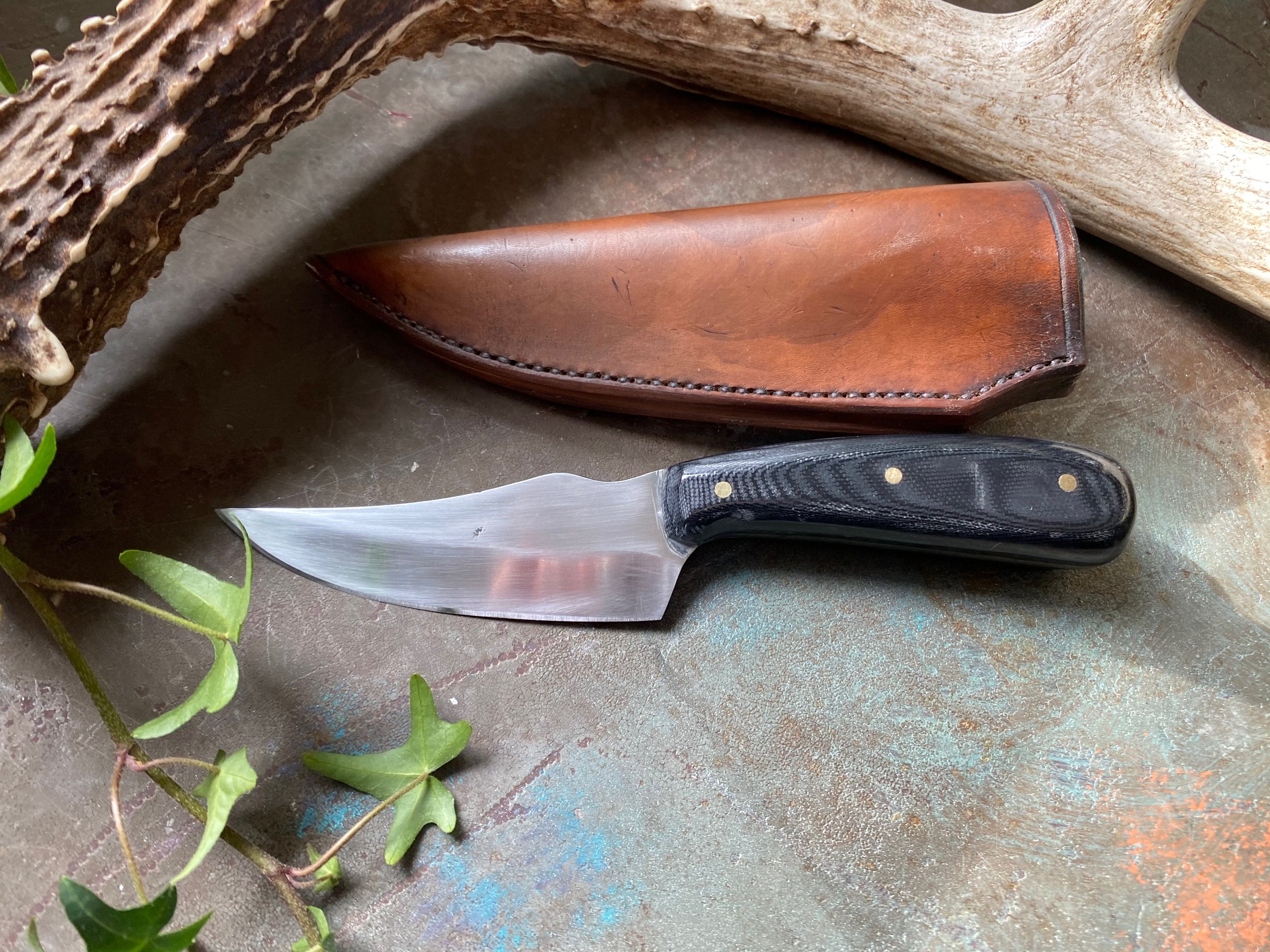What we offer
From a simple sharpening to a complete restoration of your knives and blades, we can help! Whether it’s your favourite knife, a family heirloom, or your day-to-day kitchen knife, we can tackle:
Dull blades
Broken tips
Broken handles
Loose scales
Scratched or rusty blades
Custom leatherwork
KNIFE CARE
In order to keep your knife working at peak performance, some simple maintenance goes a long way!
-
This is one important step that should not be ignored, or your knife will not perform as intended.
Knives should not contact other knives or utensils (like the utensils in a drawer). Your knife from us will either come in its own custom leather sheath or cloth storage bag to protect it from edge damage and scratches.
-
Assuming you have knives made with quality steel, and you always cut on a board, you can sharpen a knife in 15 seconds per week. Simply use butcher’s steel for about 5 strokes per side. If you do this regularly, every week, your edges will stay sharp.
“Steeling” only takes a few seconds but should be done fairly frequently, there isn’t really such thing as too much steeling! Professional cooks will do it multiple times per day, but for the home user, once or twice a week is generally fine. Think of it as preventative maintenance; if you touch up your knives before they are badly dull, they will stay sharp for a long time and maintenance will be easy. If, on the other hand, you wait for weeks or months before steeling, letting the knife become very dull, you will probably get poor results when you do try to touch them up.
Avoid pull through sharpeners that use tungsten carbide blades to peel away metal; they remove too much steel and don’t produce a good finish.
-
All knives need maintenance occasionally; frequency will depend on the quality of the knife as well as its usage and treatment. There are two types of edge maintenance: sharpening (material removal with abrasives to re-establish an edge), and straightening or “honing”, (fixing a rolled over edge without removing much, if any, material). Of the two, straightening is necessary more often. Straightening is done with honing steel. We recommend kitchen knife users have both a steel for regular edge straightening and an abrasive sharpening tool for occasional, thorough sharpenings. Alternatively, abrasive steel (like the diamond or ceramic ones) can be a good “all-in-one” solution if used frequently. Outdoor knife users should have a small tool, like a pocket stone or mini diamond rod, for touch-ups in the field and a main sharpening tool, such as a water stone or jig type sharpener, for thorough sharpening at home.
